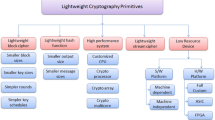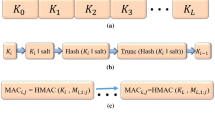Abstract
As an innovative communication scheme, ultra narrow band modulation is attracting more and more attention. In order to uncover the essence of the technology, asymmetric binary x shift keying, the general design scheme of UNB, is proposed and studied in this paper as a different modulation scheme from the traditional methods. The general wave function is defined first, and the modulation process is presented, then particular realization of asymmetric BASK, asymmetric BPSK, and asymmetric BFSK were studied. This verified the general characteristics of asymmetric binary x shift keying proposed above as the general modulation format design of UNB technology from the view of modulation essence. On this basis, time domain and frequency characteristics are given by derivation of wave function and PSD equation, and different particular time domain waveforms and PSD are plotted and examined. Next, a general modulation realization is presented, and the modulation and demodulation process are related, which break through the traditional filtering methods. Filter can then be replaced by other signal shaping methods. Finally, demodulation performance formulas of asymmetric binary x shift keying-based ultra narrow band modulation are derived and compared, which can be a base and guide for further modulation study or a trade off for an optimized design of UNB modulation formats.
Similar content being viewed by others
References
Maseng T. (2010) Power spectrum of small h CPM. Wireless Personal Communications 55: 585–589
Zhang, S. K. (2010). On efficient modulations via asymmetric binary phase shift keying. Ph.D. Dissertation, Southeast University, China, unpublished.
Lin, J. S., & Feher, K. (2001, October). Test and evaluation of ultra high spectral efficiency Feher Keying (FK). In Proceedings of international telemetry conference, Las Vegas, NV.
Chakravarthy, V. D. (2004, March). Cognitive radio-adaptive waveforms having spectral sharing capability. In Proceedings of IEEE communication society/WCNC2004.
Walker, H. R. (2010). Ultra narrow band modulation textbook. Available: http://www.vmsk.org/.
Walker H. R. (1997) VPSK and VMSK modulation transmit digital audio and video at 15 Bits/sec./Hz. IEEE Transactions on Broadcast Engineering 43(1): 96–103
Zhang S. K. (2009) UNB modulation salvages spectrum. Microwaves & RF Magazine 4: 48
Chen, R. M. (2009). Ultra high spectral efficiency modulation. Communication Word, 29, B17.
Walker, H. R. (2002). Pulse position phase reversal keying (3PRK), also called Missing Cycle Modulation (MCM/3PRK). US Patent 6:445,737.
Zhang, S. K., & Wu, L. N. (2007, July). Raise spectrum efficiency with extended BPSK modulation. In Proceedings of 11th world multiconference on systemics, cybernetics and informatics (WMSCI2007), Orlando, FL.
Bobier, J. (2007). Tri-state integer cycle modulation. United States Patent Application.
Sayhood, K. H., & Wu, L. (2001). Raise bandwidth efficiency with sine-wave modulation VMSK. Microwaves and RF Magazine, 4, 79–84.
Zheng, G. X., Feng, J. Z., & Jia, M.H. (2007, December). Very minimum chirp keying as a novel ultra narrow band communication scheme. In Proceedings of the 6th international conference on information, communications and signal processing (ICICS2007), Singapore.
Zhang S. K., Wu L. N. (2008) Orthogonality and power spectra of EBPSK modulated waves. Journal of Applied Science 2: 26
Zhang S. K., Wu L. N. (2008) PSD analysis of EBPSK modulated signals. China Joural of Radio Science 23(3): 390–394
Walker, H. R. (1997). Attain high bandwidth efficiency using VMSK modulation. Microwaves & RF Magazine, 12, 173–186.
Press Releases. xG technology’s first public demonstration of xMax technology. Available: http://www.xgtechnology (2006).
Wu, L. N., Li, J. X., Zhang, S. K., & Zhu, R. X. (2006). Geometrical characteristics filter on time-frequency domain overlapping signal. China patent: ZL200610088315.1, December 13.
Zhang, S. K. (2008). Bandwidth efficiency analysis of UNB modulation schemes. In Proceedings of the 4th international conference on wireless communications, networking and mobile computing (Wicom2008), October 12–17, Dalian, China.
Author information
Authors and Affiliations
Corresponding author
Rights and permissions
About this article
Cite this article
Zhang, S. Study on the General Design Scheme of UNB Modulation Formats. Wireless Pers Commun 70, 1777–1791 (2013). https://doi.org/10.1007/s11277-012-0780-6
Published:
Issue Date:
DOI: https://doi.org/10.1007/s11277-012-0780-6




